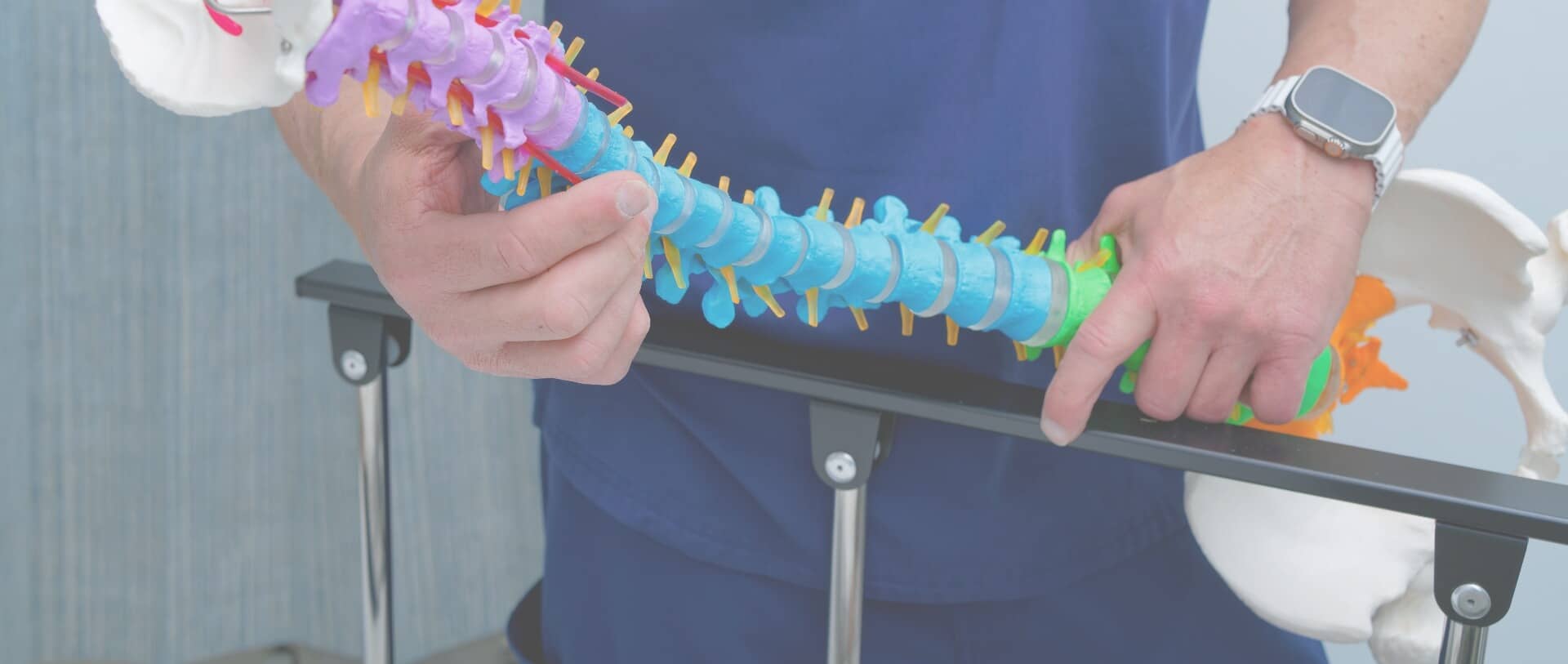
PROCEDURES
Spinal Fusion
At Gottlieb Spine, our spine specialists regularly perform minimally invasive spinal fusion surgery, a common procedure to treat back pain and other back-related issues. Whether you need an interbody fusion or a scoliosis spinal fusion, our surgeons provide the safest and most effective care. Schedule a consultation at our locations today to find out if you are a candidate.
What is a Spinal Fusion?
A spinal fusion is a spine surgery done to join two or more vertebrae together, creating a single, solid bone structure. This is done to stabilize the spine by eliminating motion between the fused vertebrae.
Spinal fusion surgery may involve the use of bone grafts or instrumentation like screws and rods and can be performed through various surgical approaches. The exact procedure will depend on your specific condition and needs.
The first step to spinal fusion surgery is an accurate diagnosis. Consult with one of Texas’s leading spine specialists, Dr. Jamie Gottlieb, for an expert diagnosis and treatment.
What Conditions Can Be Treated with Spinal Fusion Surgery?
A spinal fusion is done with several key objectives, including:
- Stabilization
- Pain relief
- Alignment
- Nerve decompression
- Improved quality of life
There are a variety of spine conditions that can contribute to instability, pain, and nerve compression. Some common reasons for undergoing spinal fusion surgery include:
- Degenerative disc disease: When the discs between vertebrae in the spine wear down, fusion can be done to stop motion at that segment and alleviate discomfort.
- Herniated disc: Fusion surgery can relieve pressure on the nerves caused by leaving the inner material of the disc.
- Stenosis: When the spinal canal narrows and compresses the spinal cord or nerves, fusion surgery can create space and reduce pressure on the affected structures.
- Spondylolisthesis: When one vertebrae slips forward over another, it can cause instability and pain. Fusion can realign the vertebrae and stabilize the spine.
- Spine fractures: Injuries like spinal fractures may require fusion to stabilize the fractured vertebrae and promote healing.
- Scoliosis or kyphosis: Abnormal curvatures like scoliosis or kyphosis may be treated with a scoliosis spinal fusion to restore stability.
- Instability: If you’re experiencing pain or difficulty when standing or walking, it may be instability in the pelvis or lower back and will require sacroiliac joint fusion surgery.
What are the Different Types of Spinal Fusion?
The location in your spine affected by instability will determine whether you need a lumbar spinal fusion, cervical spinal fusion, or sacroiliac fusion. Dr. Gottlieb will determine which procedure is right for you.
- Anterior lumbar fusion (ALIF): ALIF surgery involves accssing the spine through the front, or anterior part of the body. If a disc is removed and the intervertebral space is the focus of the surgery, this is also known as anterior lumbar interbody fusion.
- Transforaminal lumbar interbody fusion (TLIF): Your surgeon will access the spine through the back, or posterior.
- Lateral lumbar interbody fusion (XLIF): XLIF surgery accesses the spine and intervertebral discs from the side.
How is a Spinal Fusion Done?
The exact steps of the spinal fusion procedure will depend on the specific technique being used. Typically, the surgery will follow these steps:
- You will receive general anesthesia for the procedure.
- An incision will be made to gain access to the vertebrae that will be fused.
- Muscles and tissue will be gently moved aside to expose your spine.
- The damaged disc will be removed, and the bone graft material will be placed in the interbody space between the vertebrae, where the disc used to be.
- To stabilize your spine while the fusion progresses, screws, plates, rods, or cages (also known as interbody devices) may be used to hold the vertebrae together.
- The incision is closed
What is an Interbody Fusion?
Spinal fusion and interbody fusion are related procedures, both done to stabilize the spine. Lumbar interbody fusion is a specific type of fusion surgery that focuses on the intervertebral disc space, or the cushioning between two vertebrae in the lumbar spine. Following the removal of a damaged disc, your surgeon will insert a space or bone graft into the empty disc space to promote fusion and restore disc height
Can a Spinal Fusion Be Done Using Minimally Invasive Techniques?
In the past, spinal fusion used to be a major surgery that required a lengthy operation. However, advancements in technology have made it possible for surgeons to perform minimally invasive techniques using 3D technology and tiny instruments. Opting for a minimally invasive approach offers several benefits, including:
- Smaller incisions
- Less bleeding and scarring
- Less pain
- Lower risk of infection
- Shorter hospital stay
- Quicker recovery
A minimally invasive sacroiliac joint fusion surgery can not only limit joint motion and relieve pain, but do so with a less extensive recovery process compared to traditional open surgery.

Top Quality Care at Gottlieb Spine
Dr. Jamie Gottlieb specializes in minimally invasive spinal fusion surgery, which has become more common to treat back pain and related spine issues. He will determine which approach, be it lumbar, cervical, or sacroiliac fusion is right for you. Schedule a consultation today to see if you’re a candidate for this transformative procedure.
SCHEDULE A CONSULTATION